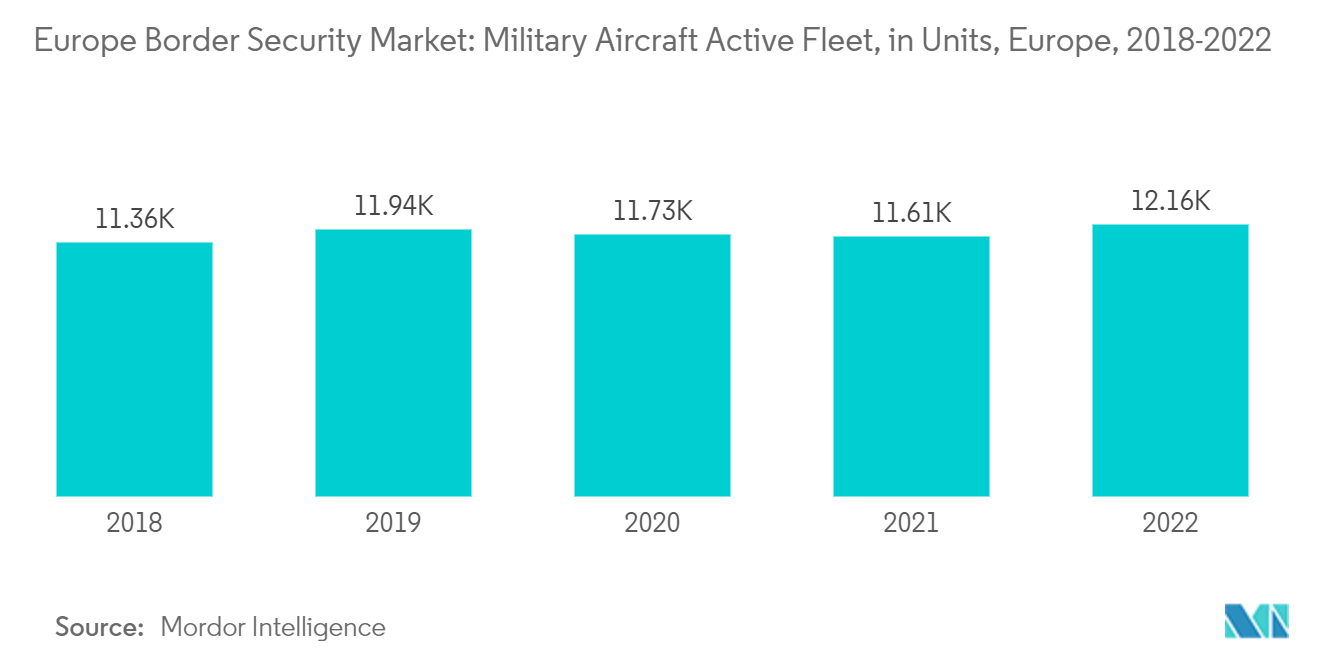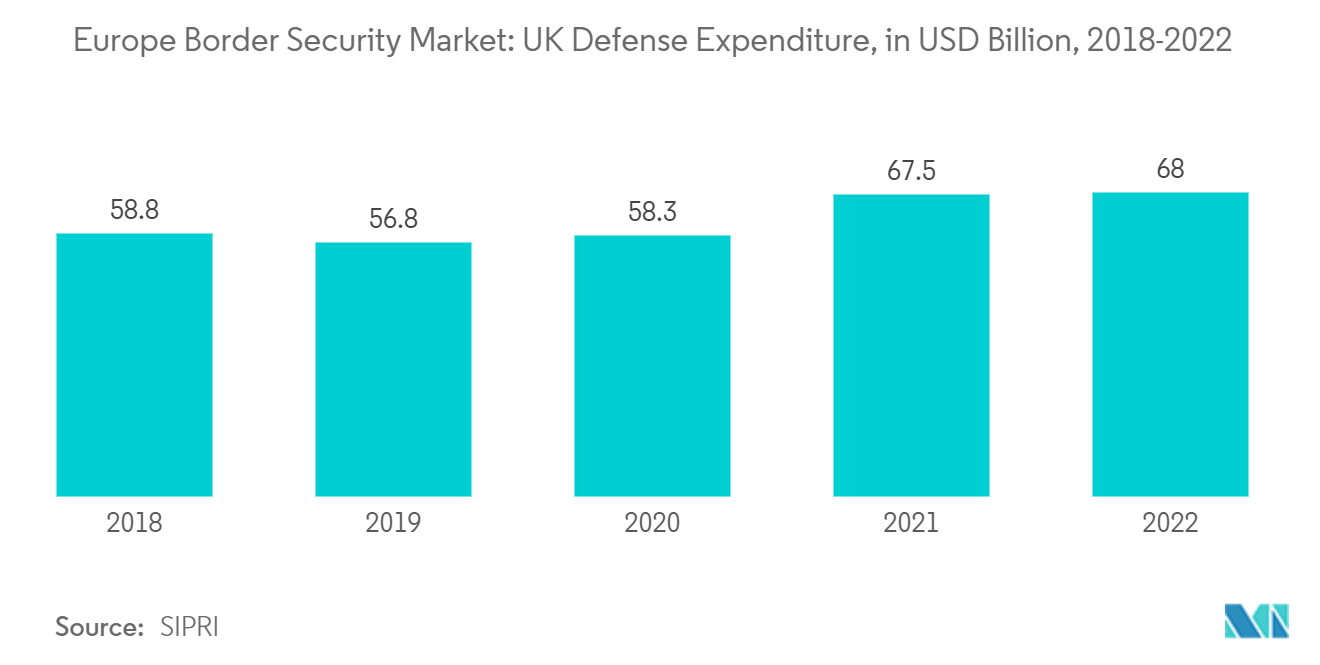Market Trends of Europe Border Security Industry
Terrestrial Segment to Dominate Market Share During the Forecast Period
The surge in illegal infiltrations in Europe from the Middle East and African nations has aided the demand for land-based border security systems in the European region. The demand has escalated on account of the ongoing Russia-Ukraine conflict which has led to the mass exodus of the populace seeking refuge in neighboring countries.
In 2022, Europe spent USD 480 billion on its military, as many European states are also part of NATO, with a commitment of 2% of defense expenditure to EU member states. The increasing military expenditure of the countries is fueling the procurement of modernization plans of armed forces for the procurement of advanced border protection. Europe has adopted automated border control systems for enhancing border security and managing the increasing volume of international travel within the region.
A sharp rise in terrorist activities in the past decade, globally, has resulted in security agencies focusing on the protection of national boundaries. The use of advanced explosives has augmented the need for developing new scanning and detection systems at checkpoints to counter emerging threats, which has led to the launch of multiple border security systems to cater to the demand and specifications of border security forces and homeland security agencies. The spending on border protection as per the European Commission’s budget in the 2021-2027 budget period is expected to increase to almost USD 40 billion. An increased budget allocation is envisioned to foster the procurement and deployment of new border security systems, driving the growth prospects of the market in focus during the forecast period.

United Kingdom to Witness Highest Growth During the Forecast Period
The UK faces a substantial threat from terrorism, with transport infrastructure dealing with higher levels of threat. Higher levels of effective and visible protective security at national infrastructure sites are likely to act as a deterrent to terrorists, who attack ‘soft’ targets. Nevertheless, with the continual diversification of the threat, the ambition and capability of terrorist groups to target UK infrastructure is likely to continue to evolve.
The departure of the UK from the EU has increased the requirement for investment in UK border crossings. In 2020, the UK government allocated over USD 910 million for border infrastructure, technology, and new staff to ensure British border systems are fully operational at the end of the transition period through the Nationality and Borders Act.
The UK is currently developing its advanced surveillance capabilities. The UK government has dedicated additional spending on post-Brexit border crossings, to create an effective border by 2025. The focus is on infrastructure such as border control posts, IT systems and staffing, and seamless screening and scanning of cargo and personnel.
The UK Border Force uses a range of technology to assist with their searches, including carbon dioxide detectors and motion sensors as well as sniffer dogs to detect clandestine on-board lorries. ePassport gates are currently available for the UK and EU nationals to enable faster processing at the border checkpoints and airports. Efforts are being divested towards developing new border security and immigration systems that make better use of data, biometrics, analytics, and automation to improve both security and fluidity across the border.


